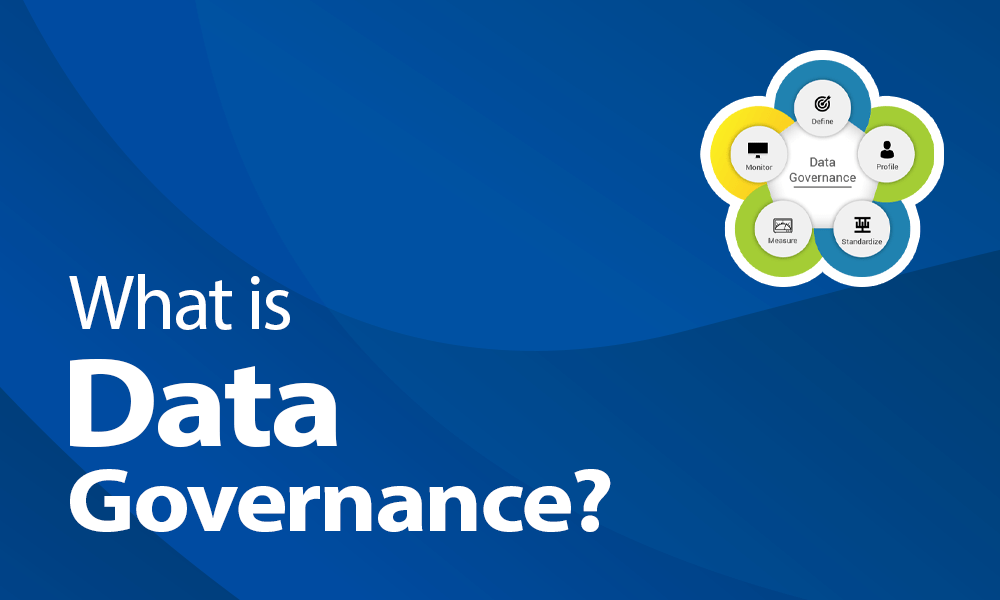What is Data Governance as a Service in Business and How it’s Helpful?
Data Governance as a Service (DGaaS) is a cloud-based platform of services that helps enterprises meet ever-increasing compliance requirements across fast-rising datasets.
DGaaS allows you to automate and simplify the procedures of identifying private information within your unstructured data barriers, classifying it based on type, utility, or sensitivity, and then obtaining and exporting it as needed, all while ensuring an appropriate chain of control is maintained and documented.
DGaaS may be used in various cases to offer effective data governance across all primary components. This starts with the ubiquitous discovery of data and categorization, which uses software tools to examine all data wherever it may be located within a potentially complicated data architecture. With this deep information, businesses can recognize their data assets, determine if they are misusing data, and, by definition, comprehend their degree of risk.
The Developing Role of Data Governance as a Service (DGaaS)
Data governance is a multifaceted process that includes the quality of data, master data management, and the issues posed by encryption, as well as the selection of appropriate technical solutions and policy enforcement.
Organizations adopting DGaaS to promote business development or transformation and strong regulatory compliance are turning to the ‘as-a-service’ model to bridge the gaps in data governance skills, experience, and technology that cause many initiatives to fail. This method is intended to reduce investment risk while providing the strategy and proven technology needed to ensure data governance initiatives’ success.
Organizations need clear guidance toward an orderly approach to make data governance as a service since everything cannot be accomplished simultaneously. Good data governance needs vision rather than techniques, which will take time. It should be a long-term journey supported by a strong foundation rather than a one-time data effort.
DGaaS may be applied to the primary components for excellent data governance across various use cases. This starts with a data discovery and categorization phase, in which software tools scan all data, regardless of location. With this precise view, businesses can readily identify their data assets, identify areas where data is misused, and improve their risk management.
The next step of the data governance procedure focuses on effective process design and documentation, freeing up operational and expertise resources to concentrate on data value generation. Organizations may now use the outputs from the toolsets to create actual business results.
This allows teams to adopt a more simplified approach to planning, designing, and implementing a data governance strategy closely connected with their primary goals. The solution serves as a catalyst for effective data governance by negotiating the time-consuming minefield of operational hurdles.
Key Benefits of Data Governance as a Service
Data governance as a service shifts the size issue from “How much does data governance cost?” to “How much should I be paying for data governance?”
DGaaS mitigates risk for implementation and program progress by offering expert personnel throughout the program, from strategy to implementation and continuous data stewardship.
DGaaS features a flexible support system that can scale up and down based on demand, project timeframes, and needs. This is tough to do with an in-house crew. Projects will need more data stewardship resources at the initial setup/metadata collection phase. They will have substantially fewer ongoing support requirements. DGaaS provides employment flexibility by combining onshore and offshore personnel and services. Flexible staffing saves money and offers more prompt responses due to the possibility of round-the-clock management.
Onshore resources concentrate on the following:
- Data governance maturity evaluation; plan and roadmap formulation.
- Delivering a data governance structure and procedure
- Delivering a data quality management ability
- Providing data stewardship resources
Offshore resources and services perform:
- Automated scanning and acquisition of technical metadata
- Intake of manually collected information, e.g., from spreadsheets
- Data is first linked and traced using data mappings and ETL algorithms.
- Intake of business information from uploaded templates.
- Initial confirmation of the metadata population
DGaaS provides the most value for the money spent. The blended staffing approach, accelerators, and extent of coverage provide higher value in data management, analysis, and business processes. End-to-end coverage, or concentrated coverage when required, improves the team and maximizes the costs and values related to human resources.
Importance of Data Governance for Businesses
Data governance has become more important as company data expands dramatically daily. It serves as the foundation for effective decision-making by assisting businesses in converting raw data into actionable insights.
Improving data quality
At the core of data governance is a desire to improve data quality. A solid governance plan guarantees that the data used in corporate operations and decision-making processes is clean, consistent, and reliable. This entails developing strong data validation, cleaning, and enrichment methods to ensure data integrity. High-quality data is a valuable asset in the age of analytics and big data, when every bit of information can be mined for insights and patterns.
Ensure regulatory compliance.
Data governance is essential for organizations seeking to keep ahead of the ever-changing legal environment. It helps firms comply with various standards, including those unique to their sector (such as HIPAA for healthcare or GDPR for European enterprises) and wider data privacy and security requirements. Effective data governance services entail developing rules and practices consistent with regulatory requirements, lowering the risk of expensive penalties and reputational harm associated with non-compliance.
Increasing business efficiency
Effective data governance services improve corporate operations. Data governance eliminates duplication and inconsistency by providing a uniform picture of a company’s data assets, streamlining procedures, and lowering costs. This operational efficiency results from consistent data definitions, unambiguous data ownership, and defined data handling methods, all critical components of data governance.
Data Privacy and Security
Data privacy and security are critical components of data governance services. With increasing worries about data breaches and unauthorized data use, organizations must prioritize data privacy and security. This includes determining who has access to certain data, how it may be used, and the security necessary to safeguard it.
Conclusion
Data governance as a service (DGaaS) enables enterprises to maximize the cost of their information assets while reducing operational prices. Organizations may also have access to full records governance solutions, information cataloging, lineage tracing, satisfactory control, and entry to control via partnering with specialized suppliers.
Data governance as a service offers scalable and adaptable answers that cater to commercial enterprise needs and regulatory climates. With DGaaS, agencies can focus on their core strengths while outsourcing data governance to experts who are well-versed in enterprise requirements and the cutting-edge era. Finally, data governance as a service offers a compelling fee proposition, permitting organizations to sell innovation, improvement, and aggressive benefits through better records-driven decision-making while reducing the risks associated with insufficient fact-control practices.
Stay in touch to get more updates & news on Discover Headline!







